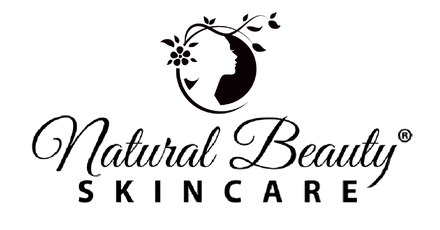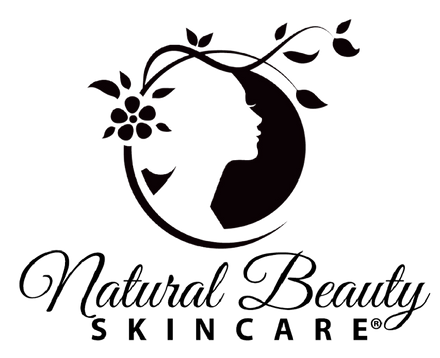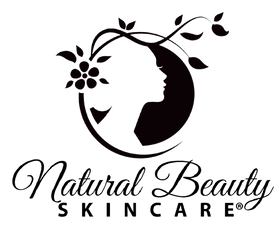Do your cosmetics contain these toxic ingredients?
The following list is not exhaustive, however it will give you a good insight into what many cosmetic companies offer...
Abietic Acid: Used to create a pleasant texture in cosmetics and soaps. Has been shown to cause paralysis in laboratory animals. Known to be irritating to human skin and may cause allergic reactions.
Acetamide Mea: A chemical solvent used in skin creams. Has been shown to cause cancer when given orally to laboratory animals.
Acrylic Acid: A synthetic polymer used as a binder and film-former in dyes, adhesives, permanent-press fabrics and now, skin creams. Toxic by skin absorption.
Aluminum Acetate: Used in skin creams as an astringent. This chemical was originally developed for waterproofing fabrics. Ingestion may cause nausea, vomiting, diarrhea and bleeding. Prolonged use topically can produce severe sloughing of the skin.
Arachidonic Acid: Used by the cosmetic industry to emulsify cream and to sooth skin, this fatty acid is extracted from animal liver and in one study, has been shown to alter the skin's natural immune response.
Behenyl Alcohol: Used for manufacturing synthetic fabrics, insecticides and lubricants, and now, used by cosmetic companies in skin cream as a thickener and emulsifier.
Benzophenone-2: Used to retain fragrance scents, may produce hives and contact sensitivity.
Benzalkonium Chloride (BAK): A widely used germicide known to cause allergic conjunctivitis. Lethal to frogs. Highly toxic. In 1992, the FDA proposed a ban on the use of this item for treating insect bites and stings. Has not been shown to be safe in concentrations over 0.1%, but it is allowed to be used in cosmetics in concentrations up to 5%.
Benzocaine (Ethyl Aminobenzoate): Used in creams and lotions to help soothe the skin, however, there are reports of babies suffering from methemoglobinemia (lack of oxygen in the blood) and systemic central nervous system excitation in adults, when absorbed through the skin.
Beta-Naphthol: Used in skin-peeling preparations. Derived from coal tar. Ingestion may cause kidney damage, eye injury, vomiting, diarrhea, convulsions, anemia, and death. Fatal poisoning from topical applications have been reported.
Bithionol: Used as a germicide in skin creams. This germicide is closely related to hexachlorophene, which has already been banned by the FDA. Can cause sensitivity to light, skin rashes and skin swelling.
Borates: In spite of repeated warnings from the medical community, the cosmetic industry continues to use borates as a cosmetic preservative. Acute poisonings have followed ingestion and lavage of body cavities and application to abraded skin. Borates affects the central nervous system, gastrointestinal tract, kidneys, liver and skin.
Butyl Oleate: Derived from butyl alcohol and oleic acid, this chemical is used for manufacturing industrial solvents and lubricants and now, used as a skin conditioning ingredient in skin creams.
Butylparaben: See Parabens
Butylene Glycol: Used in cosmetics to resist humidity, to retain scents and as a preservative. Has a similar toxicity as ethylene glycol, which when ingested may cause depression, vomiting, drowsiness, coma, respiratory failure, convulsions, renal damage, kidney failure and death.
Calcium Chloride: Main use is in fire extinguishers, as a wood preservative, and to melt snow and ice. Now used in cosmetics as an emulsifier and texturizer. Ingestion can cause stomach and heart disturbances.
Calcium Hydroxide: Used for manufacturing mortar, plaster, cement and pesticides. Also used by the cosmetic industry in cream and lotion depilatories. Accidental ingestion can cause burns of the throat and esophagus. Death may occur from shock and asphyxia due to swelling of the glottis.
Calcium Sulfate: Also known as Plaster of Paris. Generally used in cements and wall plasters. Calcium Sulfate is now being used by the cosmetic industry as a skin firming ingredient. Accidental ingestion may result in intestinal obstruction. When mixed with flour, Calcium Sulfate can be used to kill rodents.
Calcium Thioglycolate: Customarily used for tanning leather, Calcium Thioglycolate is now also being used in cream depilatories. Has been shown to cause thyroid problems in experiments on animals and some people develop hemorrhaging under the skin when used topically.
Carbolic Acid: Also known as Phenol. Used in creams and lotions for its disinfectant and anesthetic properties. Derived from coal tar. Ingestion of even small amounts may cause nausea, vomiting, and circulatory collapse, paralysis, convulsions, coma, and greenish urine as well as necrosis of the mouth and the gastrointestinal tract. Death results from respiratory failure. Fatalities have been reported from ingestion of as little as 1.5 grams.
Carboxypolymethylene: Also known as Carbomer -934, -940, -941, and as Carbopol. This synthetic chemical is widely used in the cosmetic industry as a thickening agent and emulsifying ingredient.
Carboxymethyl Cellulose: A synthetic gum used in creams and lotions as an emulsifier and stabilizer. It has been shown to cause cancer in animals when ingested. Its toxicity in topical applications is unknown.
Ceresin: Typically used for making wax paper, polish, and in dentistry for taking wax impressions, and is now used in skin creams as an emulsifier. May cause allergic reactions.
Cocamide DEA: Used in cosmetics as an emulsifying agent. Considered to be highly toxic. This is a DEA derivative. See DEA.
Cyclomethicone: Silicone
Dehydroacetic Acid DHA: Also known as Sodium Dehydroacetate. Used as a preservative in cosmetics. Not irritating to the skin or allergy causing, but if ingested, is a kidney-blocking ingredient and can cause impaired kidney function. Large doses can cause vomiting, imbalance and convulsions.
Desoxycholic Acid: Used as an emulsifying ingredient in cosmetics. Generally regarded as safe by the FDA, but is known to cause tumors in laboratory animals.
Dibenzothiophene: Also known as Thioxanthene and Diphenylene Sulfide. Used in cosmetics to add a green fluorescence. No known toxicity when applied to the skin, but when ingested can affect the central nervous system, the blood, and blood pressure. Also used as a psycho pharmaceutical ingredient to treat mental disorders.
DEA: An abbreviation for Diethanolamine. See below.
Diethanolamine (DEA): Used in cosmetics as an emulsifying agent. Considered to be highly toxic when used in industrial applications, and has been proven to cause cancer when applied to the skin of rats. And yet, this ingredient, and its derivatives, is permitted to be used in cosmetic products at limited levels. Derivative ingredients may appear as cocamide DEA or lauromide DEA. DEA can be found in over 600 cosmetic and personal care products.
Diethylene Glycol: This chemical is actually a solvent and is used to enhance the absorption of other ingredients in skin creams. Not usually irritating to the skin, but can be fatal if swallowed.
Diethylstilbestrol (DES): Also known as Stilbestrol. A synthetic estrogen fed to cattle and poultry to 'fatten them.' This chemical is now being sold to the cosmetic industry as a synthetic hormone for use in skin care products. This chemical is a known carcinogen and linked to a rare form of vaginal cancer.
Dimethoxy Methane: Used as a solvent in cosmetics and perfumes. Toxic by ingestion and inhalation.
Epichlorohydrin: Used as a solvent in cosmetic manufacturing. Also used for manufacturing varnishes and lacquers. Chronic exposure is known to cause kidney damage. Caused paralysis, convulsions and death when fed to laboratory animals (not by us).
Ethoxyethanol: Used as a stabilizer in cosmetic emulsions. Its toxicity has been shown to be several times greater than polyethylene glycol in laboratory animal tests. Produces central nervous system depression and kidney damage.
Ethyl Hexanediol: Used as a solvent for manufacturing cosmetics. Skin application caused birth defects in laboratory animals.
Ethylene Dichloride (EDC): A solvent used in manufacturing cosmetics. Also used for manufacturing vinyl chloride, paint, varnish, and as a lead scavenger in antiknock gasolines. In cancer testing, the National Cancer Institute found this compound caused stomach cancer and vascularized cancers of multiple organs. It also produced cancers beneath the skin in male rats, and female rats developed mammary cancers.
Ethylene Glycol: A chemical solvent used for manufacturing cosmetics. Also used as antifreeze. Can absorb twice its weight in water. Toxic when ingested, causing central nervous system depression, vomiting, drowsiness, coma, respiratory failure, kidney damage, and possibly death.
Ethylenediamine Tetraacetic Acid (EDTA): Widely used by cosmetic manufacturers as a sequestering preservative. It may be irritating to the skin and mucous membranes and can cause allergies such as asthma and skin rashes.
Euxyl K 400: This is one of the newer, more modern preservatives used in skin creams. There are increasing reports from physicians regarding patients who are sensitive to it, and physicians are being encouraged to test it with their patients for allergic contact dermatitis.
Fibroin Copolmyer: A synthetic polymer used as a binder and film-former in dyes, adhesives, permanent-press fabrics and skin creams. Toxic by skin absorption.
Glycolic Acid: Derived from fruit juice, an inexpensive organic acid used for brightening copper. Used in cosmetics when a cheap (inexpensive) organic acid is required. When applied to the skin, it has the potential to cause sun sensitivity and irritation.
Isopropyl Alcohol: Also known as Isopropanol. A solvent used in many cosmetic products. Derived from propylene, which is obtained from petroleum. Also used in antifreeze and shellac. No known toxicity when applied topically to the skin, but one fluid ounce is fatal if ingested.
Lauromide DEA: Used in cosmetics as an emulsifying agent. Considered to be highly toxic. This is a DEA derivative. See DEA.
Magnesium Aluminum Silicate: Used primarily as a thickener in cosmetics. In 1976 the FDA declared that it is not harmful at presently used levels, however, The World Health Organization recommended further studies because of kidney damage found in dogs that ingested it.
Methylparaben: See parabens.
Methylisothiazolinone and/or Methylchloroisothiazolinone: Used in cosmetics as a broad spectrum preservative. It is highly toxic in rats and rabbits orally but only moderately toxic when applied to the skin.
Mineral oil: Also known as White Oil. This is a petroleum by-product which can clog your pores. Mineral oil is a mixture of liquid hydrocarbons, and not particularly beneficial for any skin type, and yet, because it is cheap and stable from spoilage, is widely used in many skin care products.
Morpholine: A inexpensive solvent used as a emulsifier in cosmetics. Also used as a insecticide and fungicide. May cause kidney and/or liver injury.
Nickel Sulfate: Used in hair dyes and astringents. Causes vomiting when swallowed. Its systemic effects include blood vessel, brain, and kidney damage and nervous depression.
Nitrobenzene: Also known as Essence of Mirabane. Used as a cheap scent in inexpensive cosmetic products. Also used as a solvent for manufacturing metal polish, shoe polish and many other products. Rapidly absorbed through the skin. Poisonous. Exposure may cause headaches, drowsiness, nausea, vomiting, lack of oxygen in the blood (methemoglobinemia), and cyanosis.
Parabens: Butylparaben, methylparaben and propylparaben are the most commonly used cosmetic preservatives in the United States. They are very inexpensive and easy to use, which makes them very desirable for manufacturers. Paraben preservatives can be found in approximately 20,000 personal care products, including "natural" products. Methylparaben can cause allergic reactions and propylparaben can cause contact dermatitis. However, more importantly, recent studies have shown that parabens can also penetrate the skin and seep into the tissue. This concerns researchers because parabens have been shown to be able to mimic the action of estrogen, which can encourage breast cancer cell growth. In a recent U.K. study, 20 breast tumors were analyzed and high concentrations of parabens were found in 18 of the 20 tumors. From the research it is not possible to determine whether the parabens actually caused the tumors, but this new information does raise many concerns.
PEG: This is an abbreviation for polyethylene glycol. Available in many molecular weights, such as PEG-4 or PEG-350. The number stands for liquidity. The higher the number, the harder the composition. Widely used for cosmetic cream bases as a binder, plasticizing ingredient, solvent and softener. Also used for hair straighteners, antiperspirants and polish removers.
Petrolatum: This chemical lubricant is made using methane and olefin semisolid hydrocarbons which are derived from petroleum. Used to make skin creams feel smoother. Individuals having hypersensitive skin may have allergic reactions to petrolatum, but is generally nontoxic.
Phenol: Also known as Carbolic Acid. Used in creams and lotions for its disinfectant and anesthetic properties. Derived from coal tar. Ingestion of even small amounts may cause nausea, vomiting, and circulatory collapse, paralysis, convulsions, coma, and greenish urine as well as necrosis of the mouth and the gastrointestinal tract. Death results from respiratory failure. Fatalities have been reported from ingestion of as little as 1.5 grams.
Polyacrylamide: Used by the cosmetic industry as a thickening ingredient for creams. Also used for manufacturing plastics and adhesives. This chemical is highly toxic and irritating to the skin. Causes central nervous system paralysis. Can be absorbed through unbroken skin.
Polybutene: Used in cosmetics as a plasticizer. Derived from petroleum. Also used for manufacturing adhesives. May asphyxiate. Considered safe for cosmetic use as currently used.
Polyethylene: Widely used in creams and lotions. No known skin toxicity, but implants in rats caused cancer. Ingestion of large oral doses has produced kidney and liver damage.
Polyvinylpyrrolidone: A plastic resin used as a carrier ingredient in emollient creams, and as a softener in other cosmetic products. Ingestion may cause gas and fecal impaction or damage to the lungs and kidneys and if ingested, may last in the system for months to a year.
Potassium Hydroxide: Used as an emulsifier in creams and lotions. Extremely corrosive, and if ingested may cause violent pain, bleeding, collapse, and death. When applied to the skin of mice, moderate dosages causes tumors.
Propylene Glycol (PG): Propylene Glycol serves as a Humectant - a substance that helps to retain moisture content. It is also a wetting agent and solvent, so it is used by many cosmetic manufacturers to facilitate the process of dissolving and combining ingredients. Propylene Glycol is widely used in skin cream, and many other personal care products. Propylene Glycol is also one of the key ingredients in embalming fluid, anti-freeze, brake fluid, hydraulic fluid, de-icer, paints and floor wax. The Material Safety Data Sheet (MSDS) for Propylene Glycol clearly states: "Implicated in contact dermatitis, kidney damage and liver abnormalities; Can inhibit skin cell growth in human tests, and can damage cell membranes causing rashes, dry skin and surface damage." The MSDS also cautions: Acute Effects: "May be harmful by inhalation, ingestion or skin absorption. May cause eye irritation, skin irritation. Exposure can cause Gastrointestinal disturbances, Nausea, Headache, Vomiting and Central Nervous System depression." Propylene Glycol is toxic, and it will actually retards your skin's ability to maintain normal cellular regeneration.
In 1992, the FDA proposed a ban on Propylene Glycol in louse-killing products because it has not been shown to be safe and effective for its stated claims, yet, Propylene Glycol is allowed to be used in cosmetics in concentrations up to 50%. Animals who were experimentally exposed (not by us) to Propylene Glycol suffered all of the above symptoms, including mild to profound central nervous system depression as well as heart arrhythmia, respiratory failure, narcosis (profound stupor), growth depression, decreased blood pressure, and even death. The recommended method of storage for undiluted propylene glycol is in an explosion-proof refrigerator.
Quaternarium-15: A water-soluble antimicrobial ingredient that is active against bacteria. It is a formaldehyde releaser, and is the number-one cause of dermatitis from preservatives, according to the American Academy of Dermatology's Testing Tray results.
Sodium Dehydroacetate: A cosmetic preservative. If ingested can cause impaired kidney function. Large doses can cause vomiting, ataxia, and confusion. There are no apparent allergic skin reactions and it is considered safe as a cosmetic ingredient.
Sodium Dodecylbenzene Sulfonate: A widely used detergent in skin creams and bath products. If swallowed will cause vomiting. Some animal studies revealed kidney, intestinal and liver damage when given orally. Considered to be a safe cosmetic ingredient.
Sodium Hydroxide: A common ingredient used in household liquid drain cleaners and now, skin creams. Ingestion causes vomiting, prostration, and collapse. Inhalation causes lung damage.
SLS: Abbreviation for Sodium Lauryl Sulfate. See Below.
Sodium Lauryl Sulfate: SLS is outstanding for cleaning grease off concrete, or de-greasing a car engine. Therefore, it is of course only logical that it should also be used in toothpaste and face creams. SLS is known to causes eye irritations, skin rashes, hair loss, scalp scurf similar to dandruff, and many other allergic reactions. This is a industrial strength chemical and is frequently disguised in pseudo-natural cosmetics with the parenthetic explanation "comes from coconut".
Stearalkonium Chloride: A chemical developed for the fabric industry to promote fabric softness, and now used in face creams. Toxic.
Synthetic Colors: Usually labeled as FD&C or D&C, followed by a color and a number. Example: FD&C Red No. 6 / D&C Green No. 6. Many synthetic colors are believed to be carcinogenic (cancer-causing agents).
Synthetic Fragrances: The synthetic fragrances used in cosmetics can have as many as 200 ingredients. There is no way to know what the chemicals are, since the label will simply say "Fragrance". Some of the problems caused by these chemicals are headaches, dizziness, rash, hyperpigmentation, violent coughing, vomiting, skin irritation, and the list goes on and on.
Trichloroethane: Used in cosmetics as a solvent and for de-greasing. Can be absorbed through the skin. Inhalation and ingestion can cause symptoms ranging from vomiting to death.
Triclocarban: Also known as Trichlorocarbanilide and TCC. A cosmetic ingredient used for killing bacteria. In May of 1983 it was discovered that test results regarding this cosmetic ingredient were falsified, and lab tests which resulted in rat deaths were not being reported. Information regarding the pathology relating to the rat deaths were also not reported.
TEA: The abbreviation for Triethanolamine. See below.
Triethanolamine: A chemical used in cosmetics to adjust the pH, and also used as an emulsifier. May cause allergic reactions, including eye problems, dryness of skin, and could be toxic if absorbed into the body over a long period of time. In Italy, at the University of Bologna, it was discovered that this chemical ingredient was the most frequent sensitizer among the common emulsifiers used in cosmetics. Also used as a chemical coating to preserve fresh fruit. Concentration should not exceed 5% when used in products that come in contact with the skin.
Trioctanoin: Derived from coconut, a mildly toxic, oily, preservative. Known to cause skin irritation, and known to cause mutations in experimental animals.
Tripolyphosphate: Used as a water softener and emulsifier. May cause esophageal stricture and violent vomiting if swallowed.
Learn more about the scientific research done to study the toxicity of many common ingredients used in cosmetics and search information about the most commonly used cosmetic products on








Leave a comment